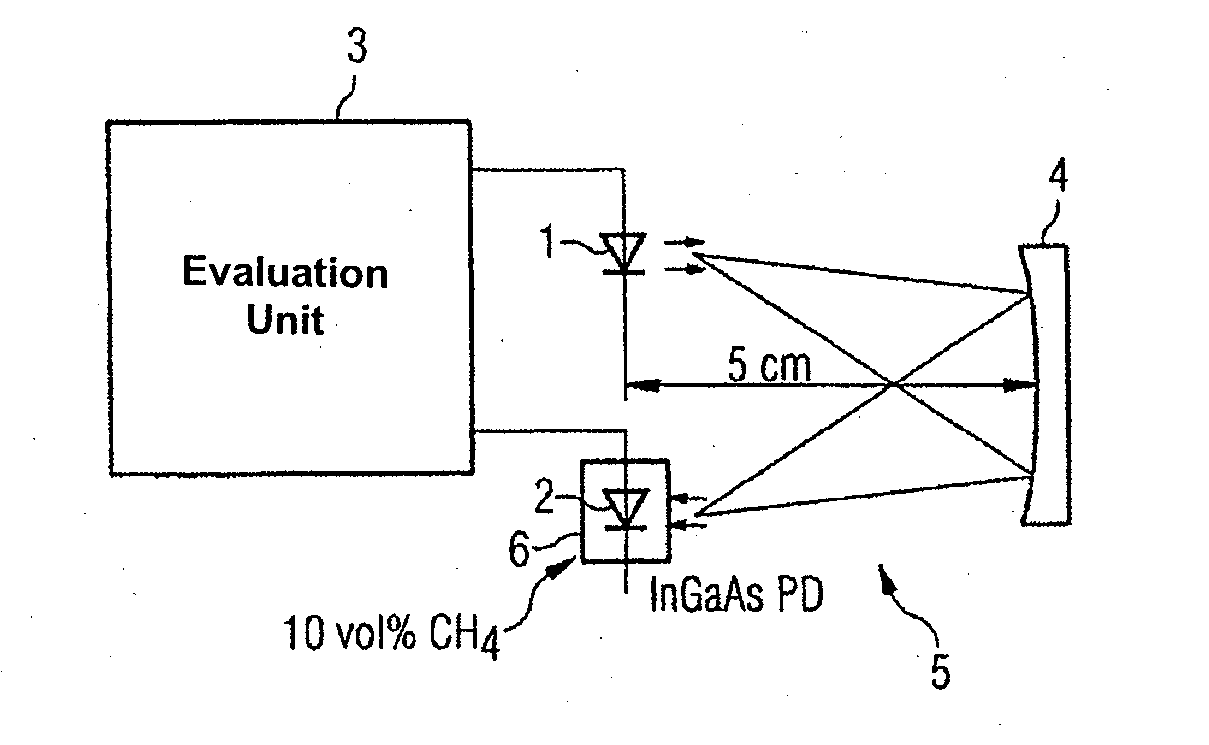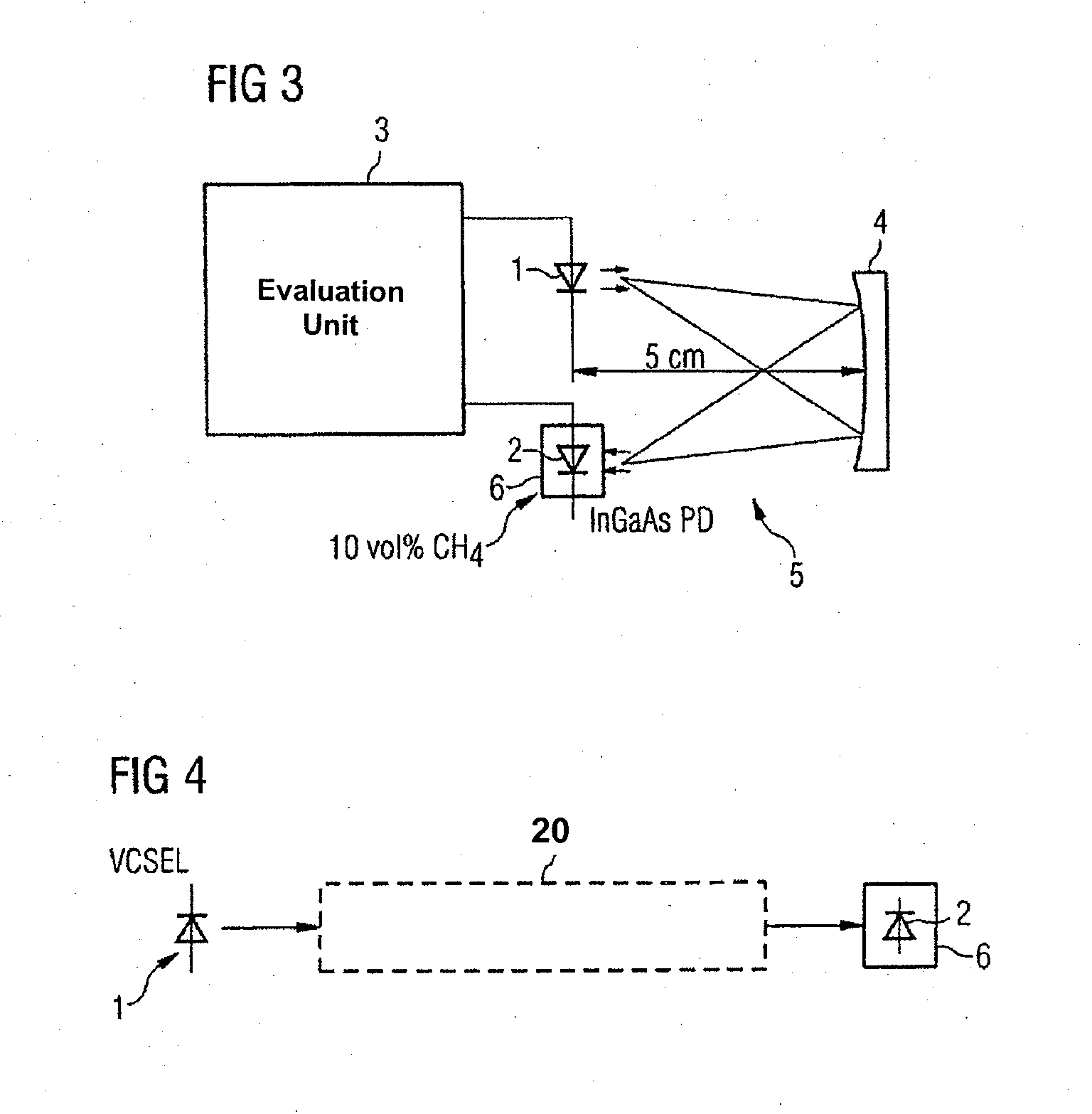Method for Detection of Gases by Laser Spectroscopy, and Gas Sensor
a gas sensor and laser spectroscopy technology, applied in the field of gas detection, can solve the problem that the emission wavelength of laser or laser diode is not known sufficiently clearly for accurate evaluation of spectra
- Summary
- Abstract
- Description
- Claims
- Application Information
AI Technical Summary
Benefits of technology
Problems solved by technology
Method used
Image
Examples
Embodiment Construction
[0033]Because of the wide tuning range of vertical cavity surface emitting lasers (VCSEL), a considerable' spectrum width can be covered for wavelength identification, for example at least 0.5 nm (VCSEL at 760 nm) to 4.0 nm (VCSEL at≧2 μm). The time period for recording a corresponding spectrum may, for example, be 640 ms. Apart from the relatively wide scanning range, as shown in FIG. 1, the wavelength scale is extracted based on the known position of strong absorption lines, such as the methane line 7. This results in an accurate association between the operating current, which is varied in order to tune the laser diode, relative to the respective wavelength in the spectrum.
[0034]FIG. 2 shows a graphical plot of an absorption line 8 of a target gas, in this case carbon monoxide (CO). The tuning range illustrated in FIG. 2, with respect to the wavelength, is contained in the wavelength range illustrated in FIG. 1, or forms a subset. The calibration based on FIG. 1, provided it is p...
PUM
| Property | Measurement | Unit |
|---|---|---|
| emission wavelength | aaaaa | aaaaa |
| wavelength range | aaaaa | aaaaa |
| time | aaaaa | aaaaa |
Abstract
Description
Claims
Application Information
 Login to View More
Login to View More - R&D
- Intellectual Property
- Life Sciences
- Materials
- Tech Scout
- Unparalleled Data Quality
- Higher Quality Content
- 60% Fewer Hallucinations
Browse by: Latest US Patents, China's latest patents, Technical Efficacy Thesaurus, Application Domain, Technology Topic, Popular Technical Reports.
© 2025 PatSnap. All rights reserved.Legal|Privacy policy|Modern Slavery Act Transparency Statement|Sitemap|About US| Contact US: help@patsnap.com



